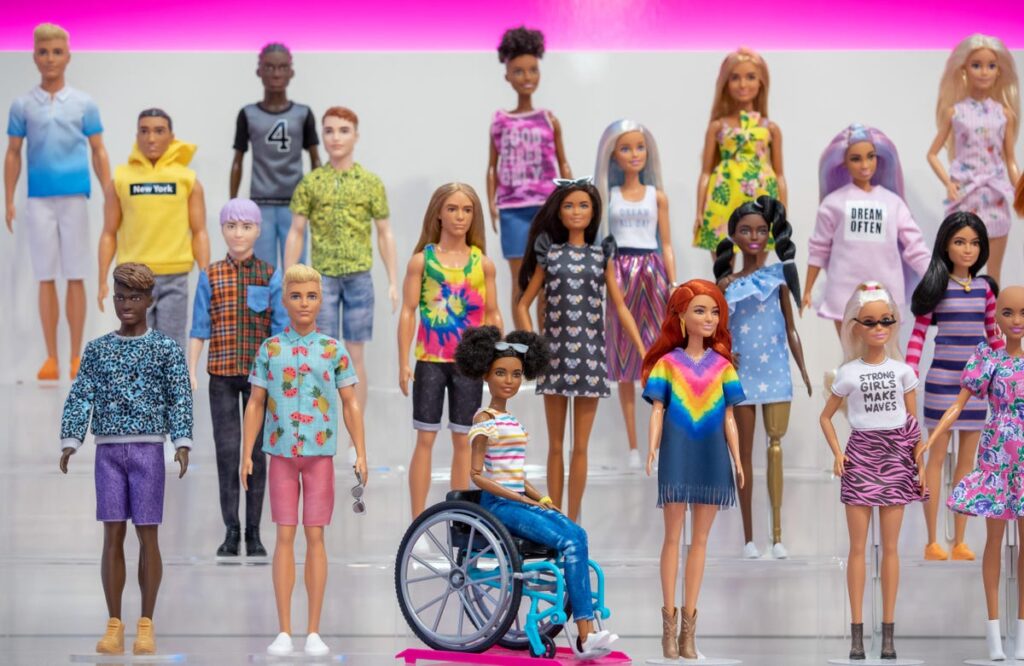Barbie Doll Syndrome and Body Dysmorphic Disorder

The syndrome is characterised by an unhealthy preoccupation with physical appearance, namely a Barbie-like ideal.
Body dysmorphic disorder, sometimes known as “Barbie doll syndrome” or “Barbie syndrome,” is characterized by an obsession with attaining an unrealistic ideal of beauty, such as that of a Barbie doll. Because of this, many young women experience emotional and psychological distress. It’s often blamed on the media for presenting an unrealistic ideal of beauty that distorts how people see themselves.
Origin
In 1959, Mattel launched a doll in the United States that wasn’t made to seem like a newborn or young kid, but rather a young woman. Barbie was promoted as a “teenage fashion model” doll. The German doll Lilli served as a model. Lilli was first introduced in German comic books. Some writers have portrayed Lilli as a sex toy, while in the comic she looks to be “a high-class call girl.” More than 150 nations have reported selling more than one billion Barbies. Sales of Barbies and related merchandise brought in $1.35 billion for Mattel that year.
Unrealistic
Unfortunately, the Barbie doll’s dimensions do not correspond to those of real, healthy women. If a regular (11.5-inch-tall) Barbie doll were made into an adult with a height of 5 feet 9 inches, her waist size would be about 18 inches. If Barbie were human, she wouldn’t have enough fat to have periods. Her UK/India-4 shoe size is much smaller than average. Barbie’s long legs were created to make her appear less like a child’s toy and more like a pin-up model. With her “preternaturally huge” breasts, “long thighs,” “full lips”, and “excellent hair,” Barbie has been called “biologically impossible.” She also has “no nipples and no genitals,” which is an anatomical impossibility in and of itself.
Repercussions
In 1996, 97% of American girls aged 3–11 had at least one Barbie doll, and each girl owned an average of seven. 86% of French children owned at least two dolls, and 98% of German children owned at least three dolls. In 2006, girls aged five to eight were shown either Barbie dolls, dolls of “normal” proportions, or no dolls at all in a research conducted in the United Kingdom. Girls under the age of 12 who were exposed to the Barbie brand expressed decreased self-esteem and a stronger need to lose weight. In the Netherlands, 117 young girls (ages 7-11) participated in research using identical methods. Girls who had played with Barbie were less hungry than girls who had played with a doll with realistic proportions. The self-esteem of American college women dropped, and their negative body image and hazardous sexual activity increased, when they compared themselves to Barbie or fashion models, according to research. These may be especially bad for young people, especially girls, who may pick up on the media’s idea of beauty at a young age and then have problems with their self-esteem.
As a result, certain pre-adolescent girls and women who look up to Barbie are at risk for developing “body image distortion.” Individuals may feel abnormally self-conscious, anxious, ashamed, and disgusted by their bodies, and have a changed impression of their physical appearance. Anorexia nervosa is diagnosed when a person meets a number of criteria, including having a bad idea of what their body looks like.
Barbie has become an obsession for small girls and while Mattel liked it, the medical professionals did not. They accuse Barbie of making small girls anorexic in their ambition to appear like Barbie. In India too, it is speculated that the availability of a strong model for slimness in the shape of the Barbie doll…may be a reason for the growth of anorexia nervosa in India
Barbie has also been criticized for promoting a culture of excessive consumerism. According to her lifestyle, to be happy, one must be well-off financially, physically attractive, and socially active. Even “suburban shopping” requires specific attire.
It’s impossible to deny Barbie’s impact. Barbie, a worldwide phenomenon in the toy industry for more than six decades, maybe one of many media and cultural influences that encourage unhealthy body ideals among young women. Despite the complexity of the causes, we see this play out in extreme examples like the cardiac arrest suffered by a sixteen-year-old girl who, at the age of eleven, desired to be the “skinniest, prettiest Barbie.”
Body-positive Barbies

The Barbie line of dolls has expanded to include those with more realistic body types. The new Barbies have different haircuts, skin tones, and body types from the originals.
Dolls are available with traditional hourglass proportions and more modern body types, such as those with wider hips and busts. Some even have options for short or tall people. These dolls were made with various body types in mind to be inclusive of all the different kinds of girls out there.
Girls now have even more opportunities to find representation in their playthings, thanks to the inclusion of Barbie dolls with disabilities and freckles in the line-up. Barbie’s new, more diverse line of dolls reflects the brand’s ongoing commitment to helping young women realise their full potential.
Reference
http://strangesyndromes.blogspot.com/2015/03/barbie-doll-syndrome.html



